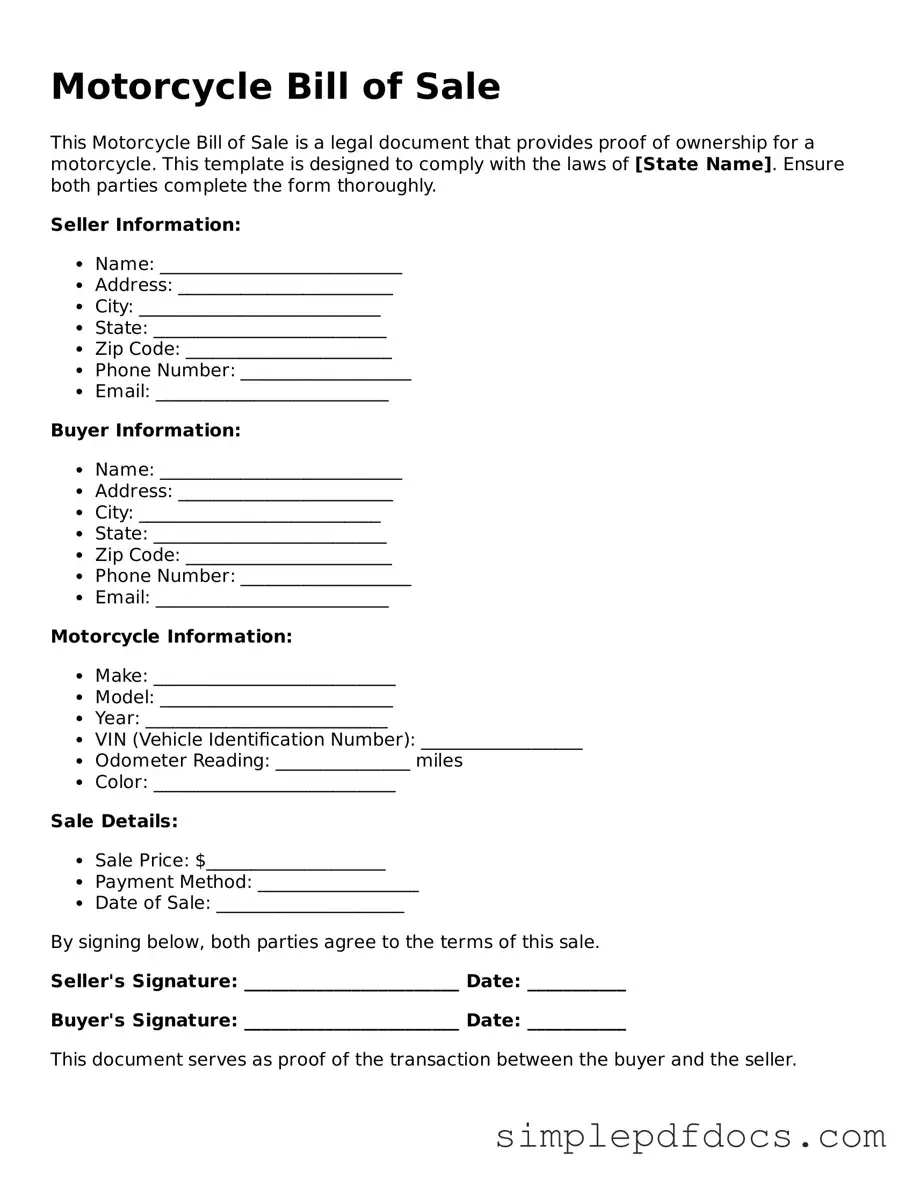When buying or selling a motorcycle, one crucial document that comes into play is the Motorcycle Bill of Sale form. This form serves as a legally binding agreement between the buyer and seller, outlining essential details such as the motorcycle's make, model, year, and Vehicle Identification Number (VIN). It also captures the sale price and the date of the transaction, ensuring both parties have a clear understanding of the terms. Importantly, the form may include information about any liens on the motorcycle, which protects the buyer from unexpected claims. Additionally, signatures from both the buyer and seller are required, solidifying the agreement and providing proof of ownership transfer. Having a properly completed Motorcycle Bill of Sale not only facilitates a smooth transaction but also serves as a valuable record for future reference, whether for insurance purposes or resale. Understanding this form is vital for anyone involved in the motorcycle market, as it helps to prevent disputes and ensures compliance with state regulations.
